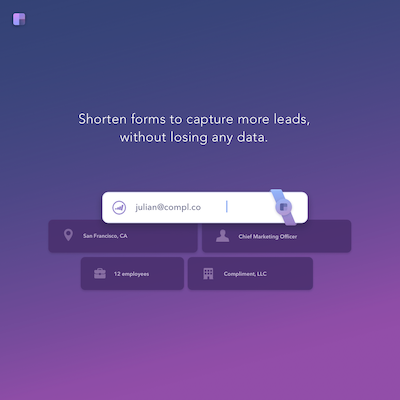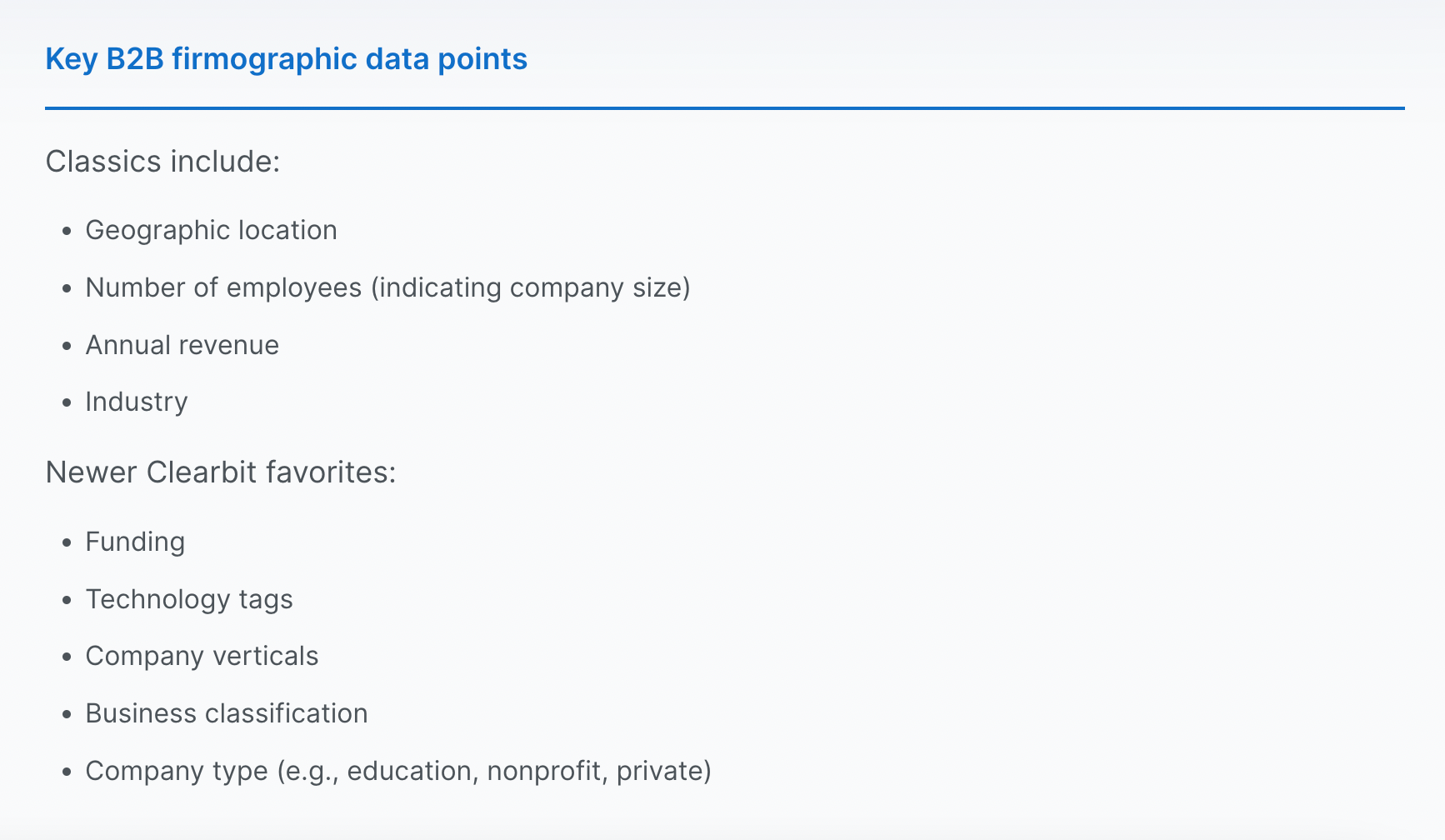The what, why, and how of B2B customer segmentation
If you’re a B2B marketer, you know how hard it is to scale personalized marketing strategies. After all, different groups of people can fit your target market, and each one will have unique goals and pain points.
To effectively build and maintain a relationship with the audiences you want to engage (and convert), customer segmentation is key. Intelligently crafted segments help you better understand what makes your audiences tick and how to create relevant experiences that will resonate with them.
What is customer segmentation?
Customer segmentation is the process of dividing your audience, prospects, and customers based on common characteristics so you can market to those customers more effectively.
Instead of taking a one-size-fits-all approach to marketing, customer segmentation enables you to target smaller, specific groups with tailored messages and campaigns. Zenefits, for example, was able to increase conversion by 20% by targeting a specific audience segment.
Customer segmentation can also help you focus marketing efforts on your best fits. When your marketing and revenue teams are aligned on which audiences to prioritize (and which ones to avoid), you’re able to focus your internal and external activities, from fine-tuning your content for specific segments to better analysis and reporting, for efficiency and impact.
Keep in mind that customer segmentation doesn't replace your SEO, content marketing, or email automation strategies — it enhances them. With customers increasingly expecting a personalized experience, the challenge for marketers is to define realistic goals and construct a helpful data model to support segmentation. One potential pitfall is trying to implement B2C segmentation methods, which doesn’t always translate well to B2B.
Why is customer segmentation important for B2B marketers?
While it’s true that customer segmentation can help you better understand your customers, that’s just scratching the surface. In fact, it touches every part of your business.
Doing a customer segmentation exercise provides key input to inform your go-to-market strategy, develop products that fit the needs of particular customers, design sales motions that win over each segment, and much more. Here are a few areas where customer segmentation can help B2B marketers drive faster and smarter growth.
Product and content marketing
When you market to everyone, you’re essentially marketing to no one. Instead, focusing your marketing efforts on a specific customer segment enables you to home in on their specific needs and tailor your messages and solutions accordingly.
For example, if your business sells to both enterprises and SMBs, you can create dynamic website content that addresses the specific needs of each segment. Or if you segment your customer base by industry, you might develop content that shows prospects how someone in their particular field can use your product.
In addition to content marketing, customer segmentation can inform product marketing. From identifying a clear job to be done to nailing your product messaging and positioning, customer segmentation makes it easier to discover insights about your ideal customers so you can identify the most effective ways to engage them. The more you understand about your customer segments, the more customer-centric your content and product marketing can be.
Advertising campaigns
With customer segmentation, you can target your ads to the right people with the right messaging at the right time to reach highly qualified B2B audiences. When you run campaigns that target an entire market, you’ll not only spend a lot of money on ads — your conversion rates will be suboptimal. The most effective way to increase your campaign conversion rates is to target a specific segment that’s more likely to be interested in your offering.
At Clearbit, for instance, Head of Demand Colin White creates an audience for every ideal customer profile (ICP) in our target market and tailors ad campaigns for each. So for our form shortening solution, which works with both HubSpot and Marketo, we could run different ads for audiences based on which tool they use.


Customer journey and experience
Different audience groups within your customer base interact with your products differently. That’s why customer segmentation is important for understanding the unique journeys of your target audiences. For example, an individual contributor vs. a senior manager will have different pain points and goals for using a project management tool, and you’ll want to map out tailored journeys — with the right resources and interactions — for each.
Segmentation can also help you identify your most valuable customers. This way, you can prioritize and focus your efforts on improving the experience for your best and most profitable customers first instead of attempting to optimize for every potential buyer and product all at once.
Account-based marketing
If you’re driving account-based marketing (ABM) strategies, your target accounts are likely to come from a few key segments within your market. In an ABM approach, you’re focusing your time, budget, and resources on a select number of high-value accounts, so it’s important to identify which segments to prioritize.The more you know about the customers in these segments, the more successful your ABM efforts will be.
One way to segment your customers for ABM is to develop a tier-based approach. Top-tier accounts get the most marketing and sales investment, while accounts in the next tier get slightly less, and so on. Prioritizing accounts in a tiered approach enables you to target and scale ABM tactics to other accounts while focusing on the customers who have the highest propensity to buy and eventually renew or expand.
How to segment B2B audiences
There are few different ways to segment B2B customers: You can group them based on their needs, potential value to the company, online behavior, and other attributes. Each of the following approaches are intertwined, and they all contribute to helping you precisely define your audiences. Using different types of data points will be especially helpful for segmenting B2B customers.
Demographic segmentation
Demographic segmentation is the most basic method of grouping audiences. Audiences are split according to observable differences like age, level of education, occupation, income, and nationality. Combining demographics with other types of customer data further narrows down your audience groups. An advantage to this kind of segmentation is that demographic data is affordable and easily accessible.

In B2C, demographic segmentation helps you differentiate between Gen Z and Baby Boomers, city dwellers and suburban residents, and so on. But in B2B marketing, demographics only get you so far. While demographic information will give you a better understanding of who your target customer is, it won’t tell you why they might be interested in buying your product. Demographic segmentation is a good starting point, but if you want to identify new, untapped, and high-value audiences, you also need to consider customer pain points, needs, and behaviors.
Firmographic segmentation
Firmographic segmentation is a way of segmenting audiences based on common company qualities or attributes, such as company size, number of employees, industry size, location, tech stack, funding, and annual revenue.
Firmographic data is to companies what demographic data is to individuals. With firmographic information, you can define your ideal customer profile and sales territory definitions for lead routing. You can also tailor and target your marketing messages to organizations that are likely to be interested in what you offer — and rule out organizations that aren’t a good match. For example, by using annual revenue data, you can identify companies that likely can't afford to invest in your product or service and filter them out of sales and marketing campaigns.

You can get firmographic data from your CRM, lead capture forms, or third-party data providers. Clearbit Enrichment, for example, lets you easily append firmographic data to your database so you have full context on your leads and customers.
Behavioral segmentation
While firmographic segmentation focuses on who a customer is, behavioral segmentation focuses on what they do, when they do it, and how often. It segments prospects and customers based on how they interact with your company, product, and marketing touchpoints.
Behavioral segmentation is different from other segmentation techniques because it focuses on how people interact with your brand. According to a Marketing Week survey, 44% of marketers said they use behavioral segmentation more than other types of segmentation and consider it the most effective way to segment customers.
Here are some of the data points to use for behavioral segmentation:
- Website activity: By tracking website activity, you can understand the companies behind anonymous visitors to your site, the actions they are taking, and what products and solutions they’re interested in so you can segment them accordingly.
- Purchase behavior: To convince people to purchase your products, you need to understand their buying habits. Among your current customers, what products of yours have they purchased, and which have they not?
- Benefits sought: There are different advantages your customers look for in your product. By segmenting your audience based on preferred benefits, you can tailor your marketing and sales efforts to suit each group's preferences.
Keep in mind that while behavioral data can tell you quite a bit, it still won’t tell you everything. While you could try to track every online interaction with your content and products, you’re still missing offline behavior, such as word of mouth or competitive interactions. That’s why it’s important to incorporate different data types in your segmentation.
Value-based segmentation
As the term implies, value-based segmentation places the potential value of a prospect to your company at the forefront of your strategy. For example, you can segment customers according to how much revenue they can bring to your business. You can also segment them according to how closely those customers align with your sales and marketing strategies. Is this a potential lifetime customer? If so, how much revenue can they bring?
The primary benefit of this segmentation model is that it allows you to allocate your resources more effectively. For example, knowing the annual revenue of companies in your target segments will help you determine how to align your pricing to what your audience is willing to pay and positioning it effectively to prevent situations like churns due to overcharging.
While value-based segmentation can help you focus on your most profitable customers, when grouped together, you may find that they are still very different from each other. It's easy to assume all of your high-value companies will share many of the same firmographics, but to put these insights to use, you may need additional segmentation criteria.
Needs-based segmentation
The starting point for this type of segmentation is identifying the potential needs of your customers. In addition to the quality of your product, what other reasons will compel them to buy from you? What else do they need that your competition doesn't offer? Perhaps it’s a high level of customer service, user-friendly interface, easier onboarding, or some other differentiator.
You can identify customer needs with surveys. For instance, you could send a survey to people in your target market to understand why they’re seeking out your product and what factors influence their purchase decision. By segmenting customers according to their needs, you can further personalize their journey with messaging and conversations addressing their specific concerns.
Needs-based segmentation can be powerful for B2B go-to-market strategies since it aligns marketing and sales efforts around specific customer pain points. With multiple stakeholders involved in the B2B buying process, it’s important to keep in mind that the person making the purchase decision might be more interested in pricing while an end user might be more interested in integrations.
The key to smarter segmentation: a smart data foundation
Data is critical to any segmentation exercise. You can only successfully segment your customers when you have a certain level of information about them. Before kickstarting a segmentation project, make sure you have up-to-date, accurate information on your prospects and customers. If you have gaps, enriching your GTM systems with complete and consistent data can help.
When segmentation is driven and informed by data (as opposed to gut feeling or plain guessing), you’re able to focus your funnel on attracting and converting the best customers with the least amount of friction and waste, with whatever GTM motions and strategies that make the most sense for your business.
Want to learn more about using data in your customer segmentation? Brush up on the data types you need in Data Essentials I.

